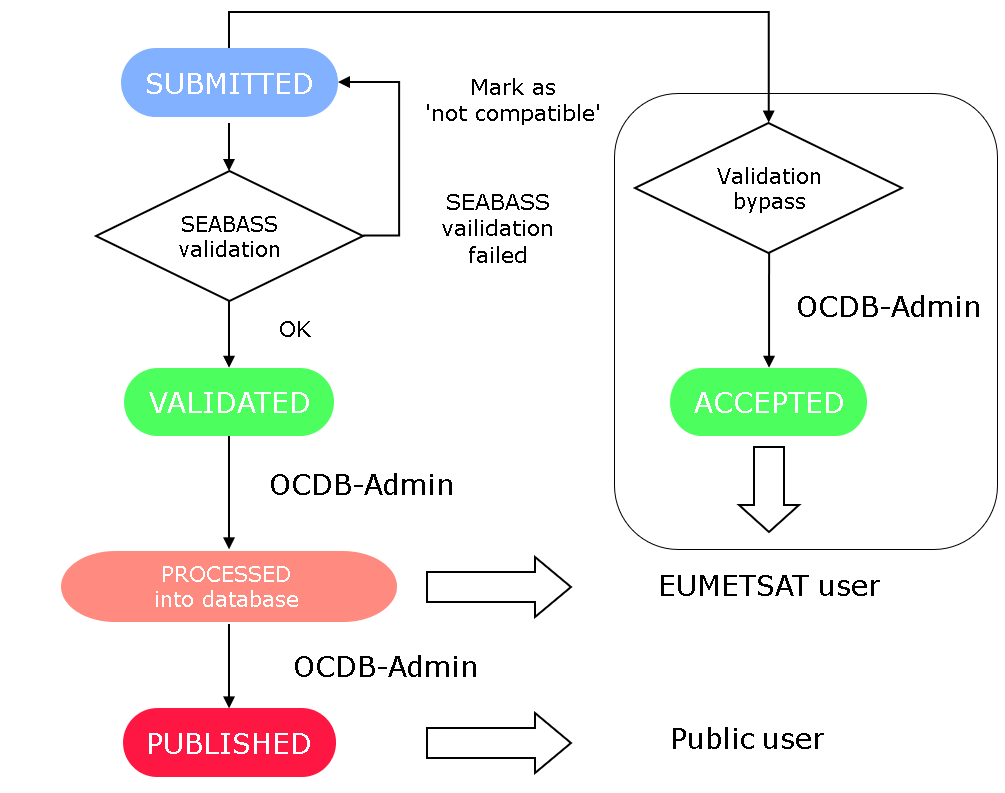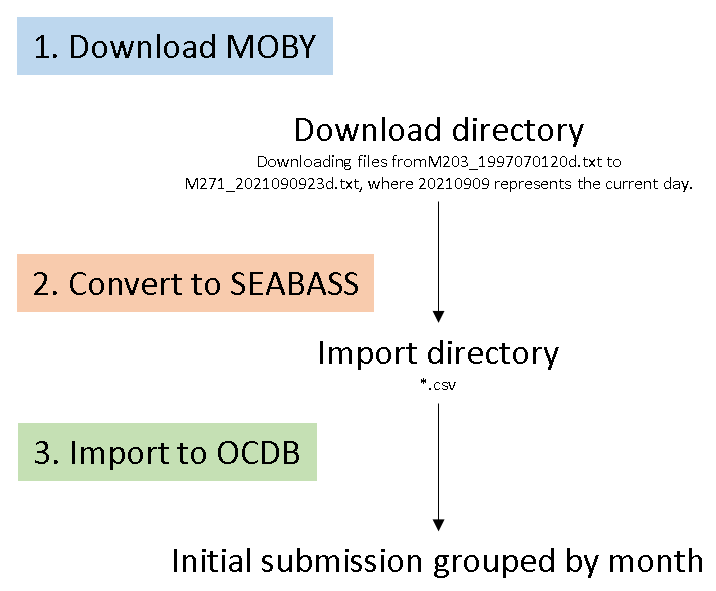External datasources¶
Ocean colour related insitu measurements are collected within the Ocean Colour database OCDB. Investigators can upload their data as text files in the SEABASS file format to make them publically available for download to other users.

Fig. 1: Data flow diagram of the OCDB database.
If uploaded data are compatible to SEABASS, they are categorised as validated automatically. Afterwards, an ODBC admininstrator can process the data files in the database and finally make them publically available. Not valid data sources can be categorised as accepted by an administrator to make the data files available for EUMETSAT-internal use.

Fig. 2: OCDB validation proces as flow diagram.
Data from external datasources such as AERONET-OC, MOBY buoy data and biogeochemical ARGO (BGC ARGO) shall be ingested into the OCDB. Data shall be accessible by EUMETSAT users only and will not provided for download by the OCDB web user interface to avoid redundancy in the WWW.
AERONET-OC data (SEABASS compatible text files)¶
AERONET-OC data are downloaded from https://aeronet.gsfc.nasa.gov/ and converted to SEABASS file format. Each file representing time series of radiance measurement at a certain AERONET Platform, is then submitted to OCDB.

Fig. 3: Flow diagram illustrating the download, conversion and ingestion of AERONET-OC data files in the OCDB database.
MOBY data (SEABASS incompatible text files)¶
MOBY data can be downloaded from https://www.star.nesdis.noaa.gov/. They are converted to a text file format similar to SEABASS. Due to the fact, that SEABASS data files contain time series data and MOBY data are hyperspectral datasets, the latter format per se is not SEABASS compatible. However, a match with SEABASS can be achieved by transposing the data, i. e. by converting rows to columns and vice versa.
BGC ARGO data¶
Download of biogeochemical ARGO data (BGC ARGO) is possible via https://data-argo.ifremer.fr/dac/. These ARGO data are provided as netCDF files. A concept to integrate the data to the OCDB system will be developed.

Fig. 4: Flow diagram illustrating the download, conversion and ingestion of MOBY buoy data files in the OCDB database.